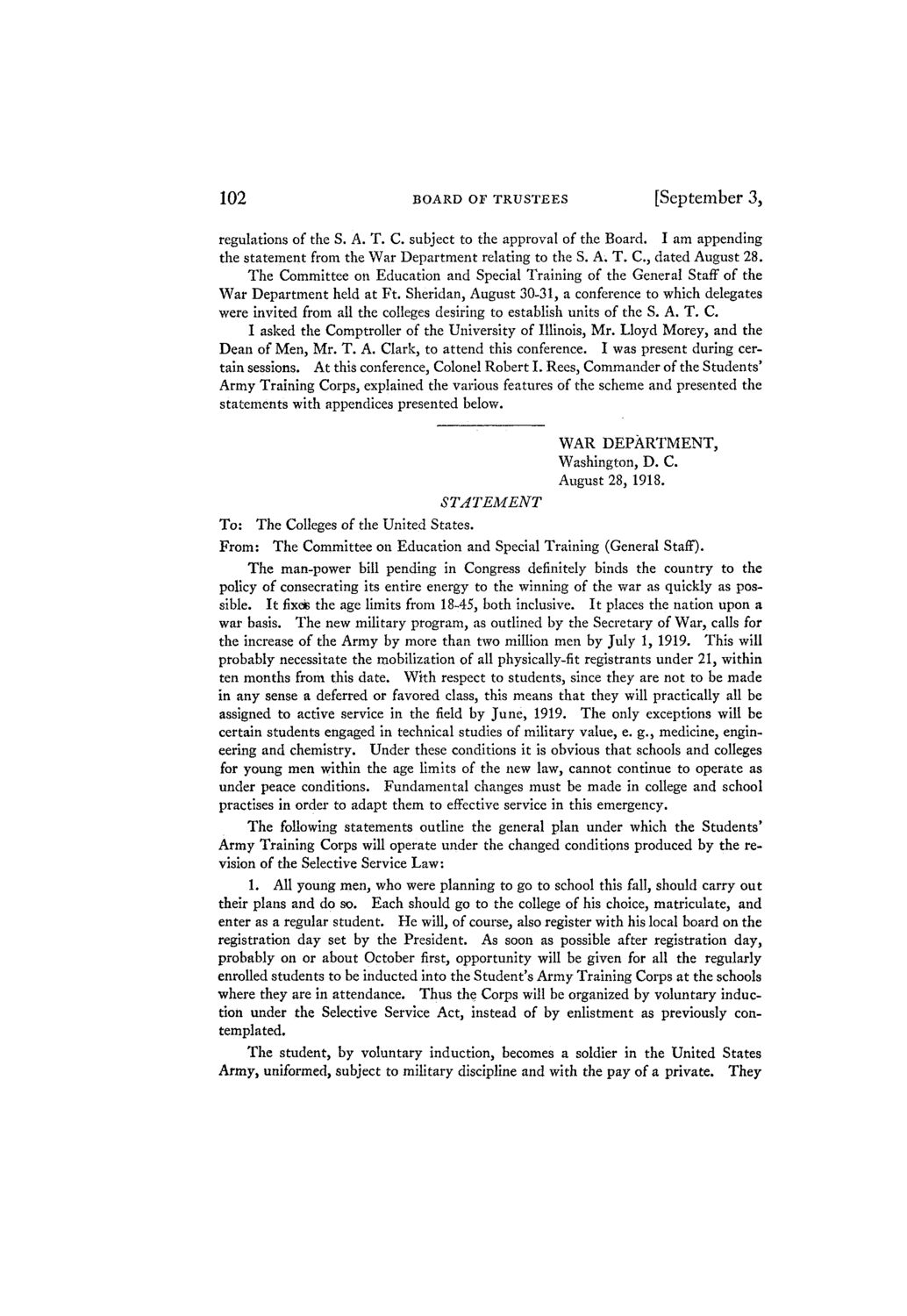| |
| |
Caption: Board of Trustees Minutes - 1920
This is a reduced-resolution page image for fast online browsing.

EXTRACTED TEXT FROM PAGE:
102 BOARD O F TRUSTEES [September 3 , regulations of the S. A. T. C. subject to the approval of the Board. I am appending the statement from the War Department relating to the S. A. T. C , dated August 28. The Committee on Education and Special Training of the General Staff of the War Department held at Ft. Sheridan, August 30-31, a conference to which delegates were invited from all the colleges desiring to establish units of the S. A. T. C. I asked the Comptroller of the University of Illinois, Mr. Lloyd Morey, and the Dean of Men, Mr. T. A. Clark, to attend this conference. I was present during certain sessions. At this conference, Colonel Robert I. Rees, Commander of the Students' Army Training Corps, explained the various features of the scheme and presented the statements with appendices presented below. WAR DEPARTMENT, Washington, D. C. August 28, 1918. STATEMENT To: The Colleges of the United States. From: The Committee on Education and Special Training (General Staff). The man-power bill pending in Congress definitely binds the country to the policy of consecrating its entire energy to the winning of the war as quickly as possible. It fixefc the age limits from 18-45, both inclusive. It places the nation upon a war basis. The new military program, as outlined by the Secretary of War, calls for the increase of the Army by more than two million men by July 1, 1919. This will probably necessitate the mobilization of all physically-fit registrants under 21, within ten months from this date. With respect to students, since they are not to be made in any sense a deferred or favored class, this means that they will practically all be assigned to active service in the field by June, 1919. The only exceptions will be certain students engaged in technical studies of military value, e. g., medicine, engineering and chemistry. Under these conditions it is obvious that schools and colleges for young men within the age limits of the new law, cannot continue to operate as under peace conditions. Fundamental changes must be made in college and school practises in order to adapt them to effective service in this emergency. The following statements outline the general plan under which the Students' Army Training Corps will operate under the changed conditions produced by the revision of the Selective Service Law: 1. All young men, who were planning to go to school this fall, should carry out their plans and do so. Each should go to the college of his choice, matriculate, and enter as a regular student. He will, of course, also register with his local board on the registration day set by the President. As soon as possible after registration day, probably on or about October first, opportunity will be given for all the regularly enrolled students to be inducted into the Student's Army Training Corps at the schools where they are in attendance. Thus the Corps will be organized by voluntary induction under the Selective Service Act, instead of by enlistment as previously contemplated. The student, by voluntary induction, becomes a soldier in the United States Army, uniformed, subject to military discipline and with the pay of a private. They
| |